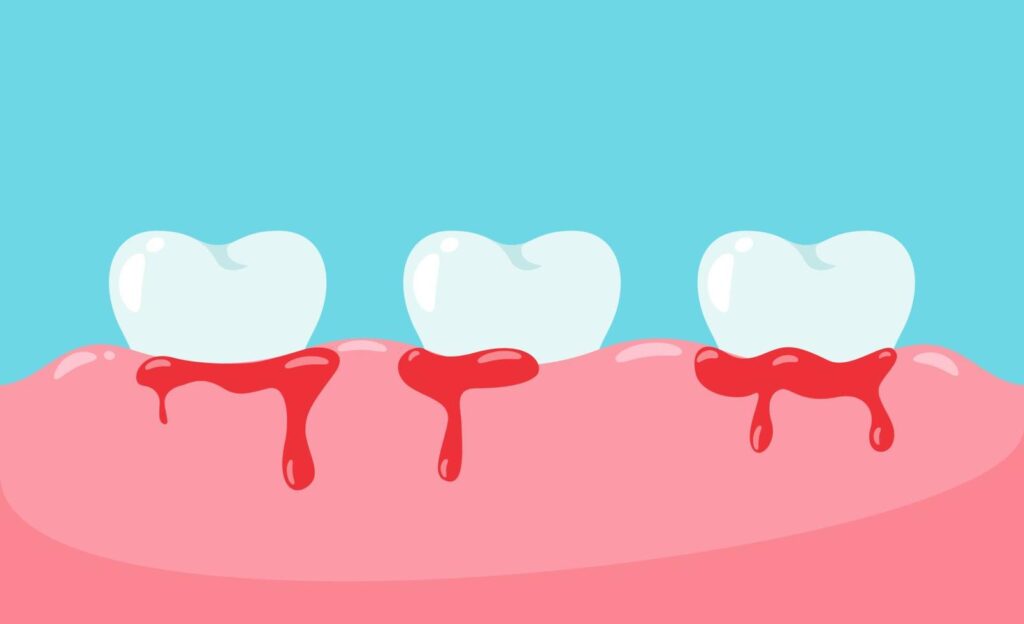It’s not unusual to notice that your gums have started to bleed when you floss, and this can happen for several reasons. Sometimes, it may be caused by brushing and flossing too aggressively, which can damage your gums.
However, the most common cause of bleeding gums in Oshawa is gum disease, also known as periodontal disease. It is a condition that requires prompt diagnosis and treatment.
What Is Periodontal Disease?
Periodontal disease is an infection and inflammation that initially begins in the gums, but can spread to other tissues supporting your teeth, including your jawbone and ligaments, called periodontal ligaments, which hold teeth in the sockets.
Advanced periodontal disease is the most common cause of tooth loss, typically resulting from the accumulation of plaque and calculus (tartar). Plaque and tartar contain bacteria that produce toxins, which infect and inflame the gums. Over time, your gums can start to recede as the tissue is destroyed and the infection spreads to your jawbone and periodontal ligaments.
Signs of Gum Disease
Gum disease is often called a silent disease because the symptoms are easy to ignore, but they can include:
- Discoloured gums that look red or purple.
- Persistent bad breath or noticing you have a nasty taste.
- Teeth that look longer as gums start to recede.
- Changes to your bite as teeth start to loosen.
What to Do If Your Gums Start to Bleed
If you have noticed blood on your toothbrush or in the bathroom sink or recognize any of the above symptoms, book an appointment to see a dentist at Margolian Dentistry. It doesn’t matter if you haven’t seen a dentist for a while, as our team are extremely friendly and approachable, especially with anyone who feels nervous or anxious when seeing a dentist.
How Is Gum Disease Diagnosed?
Diagnosing gum disease in Whitby is straightforward, requiring a visual dental exam and most likely, digital dental x-rays to assess any damage to your jawbone. A dentist may gently probe each gum using a small instrument designed to measure the gap between each tooth and gum.
When gums are strong and healthy, the gap between the teeth and gums should be no more than 3 mm. If you have signs of gum disease, then the gap increases, creating what is called a periodontal pocket or space that can easily harbour harmful bacteria.
After your dental exam, the dentist will discuss their findings with you in detail, including any recommended treatments.
Treating Gum Disease
Early gum disease, known as gingivitis, is relatively easy to treat. We recommend scheduling a hygiene appointment where we can professionally clean your teeth, removing all plaque and calculus buildup.
Removing plaque and calculus helps eliminate the infectious bacteria, allowing your gums to heal and become healthier and stronger. When combined with a better oral care routine at home, this can reverse any gum disease entirely.
We offer various treatments for advanced gum disease, also known as periodontitis, in Ajax. These include laser dentistry, a gentle treatment that uses laser energy to sterilize your gums and remove harder-to-reach bacteria in deeper periodontal pockets. As your gums recover, they should begin to fit more snugly and tightly around your teeth.


